Advertisement
Advertisement
While filming the Are You RV Safe? series, our learners learnt the basics on how to recover their 4WDs. But one important thing we ran out of time to discuss on air was the actual recovery points on the vehicle.
For those just getting into 4WDing, you may be surprised to learn that what you think is a rated recovery point is actually a tie-down point.
I can already hear the Nissan blokes giggling like school kids over that last heading, and maybe the photo of me beached as bro. But much to their upset, it’s often the bloke with the LandCruiser (okay, maybe sometimes the Nissans too) that gets pressed into service recovering the smaller four-wheel drives when they get stuck. I mean, the weight alone of the older full-sized wagons is usually enough, not to mention the stupid amounts of torque our old diesels put out.
Where the concerns begin here is – what are you recovering off? Those little looped bits of steel from the factory that look like a recovery point? The bull bar crossbar? The tow ball? Any serious recovery utilising these as the anchor point is going to go skewiff really quickly, or deadly, as some have found out.
So, with this in mind, and knowing that the majority of injuries from recoveries are caused by using unrated recovery points, we thought we’d sit down and have ‘that chat’ about rated recovery points.
Just to get this out of the way early, those little hoops you have bolted to your chassis from factory – they’re not rated and will break if you try to snatch someone with them. A three-kilo lump of steel doing a buck-80 at your fourby means you’re going to have a bad time, often with deadly consequences. So let’s have a look at the right gear, work out how to tell if it’s rated, and use the proper extras to keep you and the fam safe.
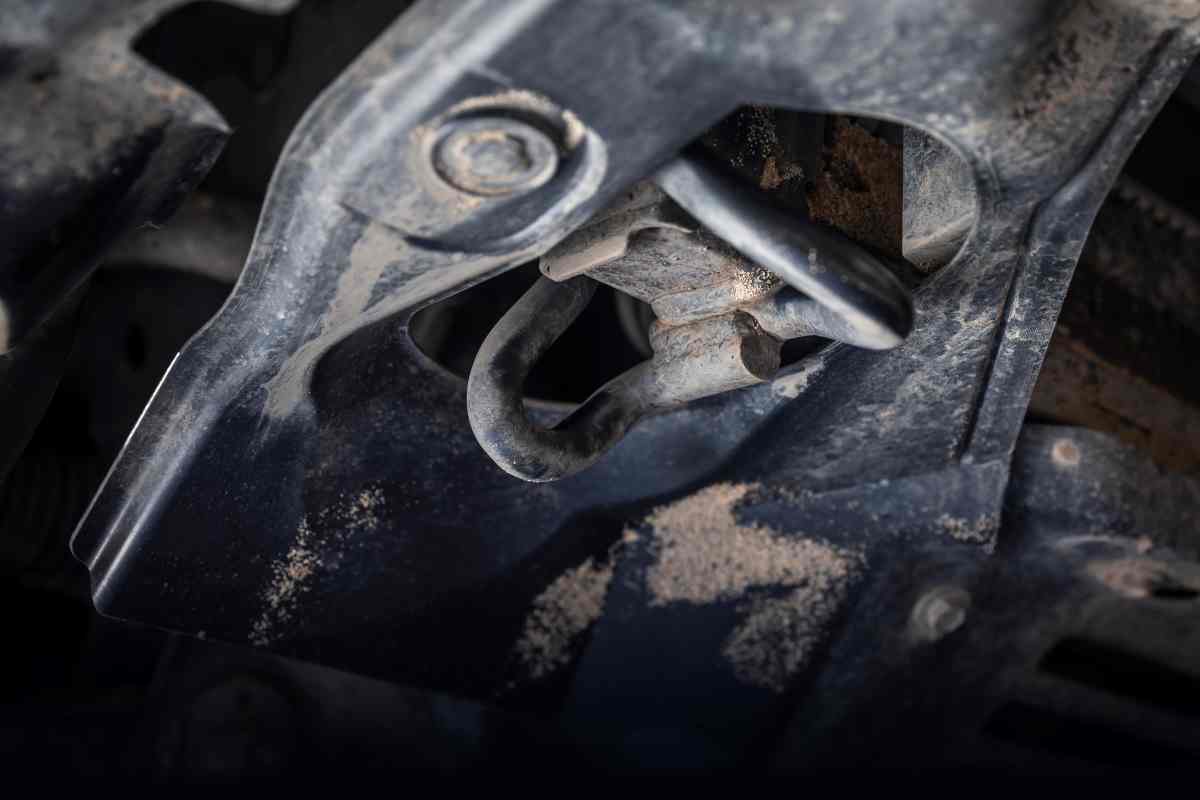
From the factory, you’ll usually have a set of tie-down/tow points on your chassis. They’re not rated, are usually pretty bloody flimsy, and are only there for when the vehicle is being delivered when new for the car carrier to tie it down, or in the case of an accident, to be tied down to a tow truck bed. Most look pretty similar in that there’s a loop of steel rod with minimal welding/bolting, and they usually point downwards. Whatever you do, don’t ever use these to recover someone up to their sills in mud.
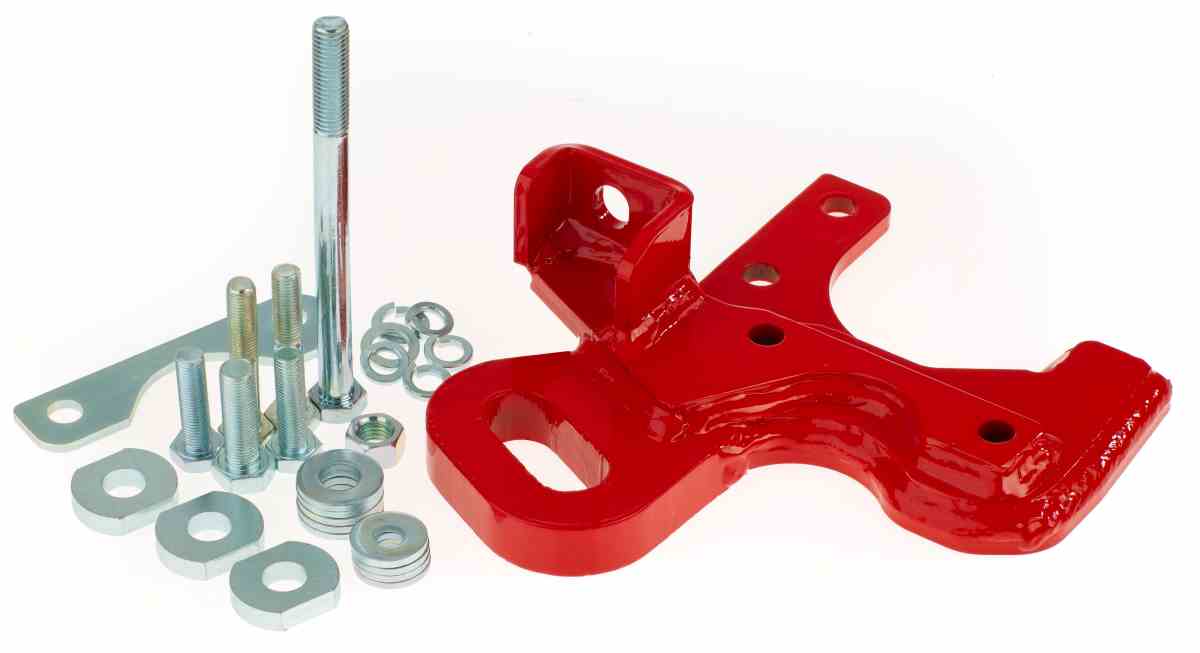
Rated recovery points are the very first thing you want to look at adding to your four-wheel drive. They can be had from just about any quality four-wheel drive store. Emphasis on quality, as there are some you’ll get from cheap shops that look the part but aren’t rated.
You’ll want to look for the rating stamp on the actual recovery point to ensure it is actually rated to a specific breaking point. The cheaper recovery points will not have a rating stamped into them.
Once you’ve got the right recovery points to suit your four-wheel drive, make sure they fit your bull bar. With the amount of different designs on the market these days, you’ll need to make sure they work with your bar – doubly so if you’ve got bash plates that may interfere with their use.
Lastly, you’ll want high-tensile bolts to hold them onto your chassis. The typical M14 high-tensile bolts you’ll get your mitts on with 8.8 marked on the head have a minimum ultimate tensile load of about 92 kilonewtons (KN). Which, when converted, equates to just about a metric sh!t-tonne. DON’T use mild steel bolts you’ve got laying around the shed. Make sure you use the included hardware, or bolts with 8.8 markings on the head.
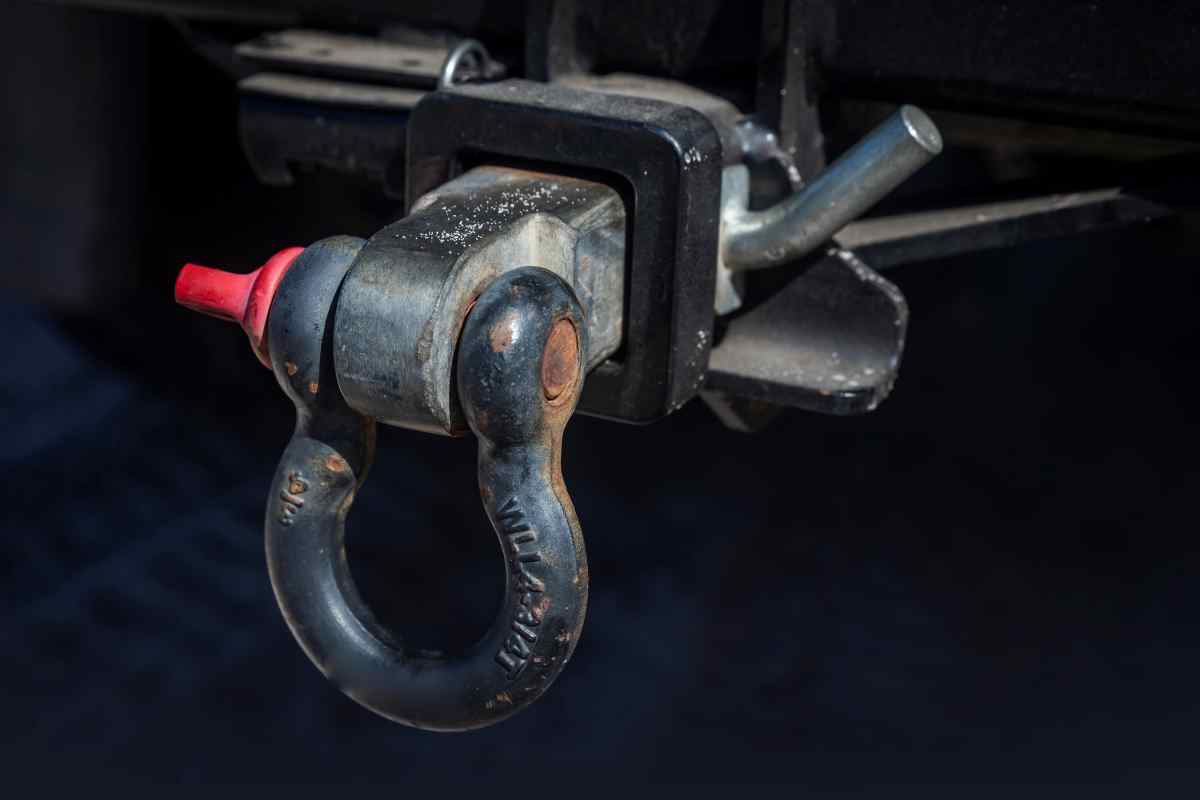
On the other end of your fourby, should you have a Hayman Reese style tow bar, you can mount a hitch receiver. This slots into your tow bar and will have a hole in it for a shackle. The pin that holds the hitch (or tow bar tongue) in, is high-tensile steel, and should hold up to a decent snatch recovery.
Under no circumstances should you loop a strap or rope around your tow ball. They’re made from mild steel and will sheer off when any great amount of shock load is applied to them. If you’re using a snatch strap and use the tow ball, you’ve just created a rather angry slingshot, and the tow ball is your ammo.
If you’ve not got a hitch receiver to put into your tow bar, you can always push the strap into the receiver of your tow bar and push the pin through the strap end. It’s not perfect and should not be used for side pulls. Only ever straight pulls.
Now that you’ve just gone and gotten yourself two shiny new recovery points and bolted them up to your chassis with some high-tensile bolts, and a lump of hitch receiver in your tow bar, there are some things you’ll need to know to make life easier and safer.
Read next: Winching for beginners
Read next: Advanced winching guide – how to be a Kung-Fu recovery master
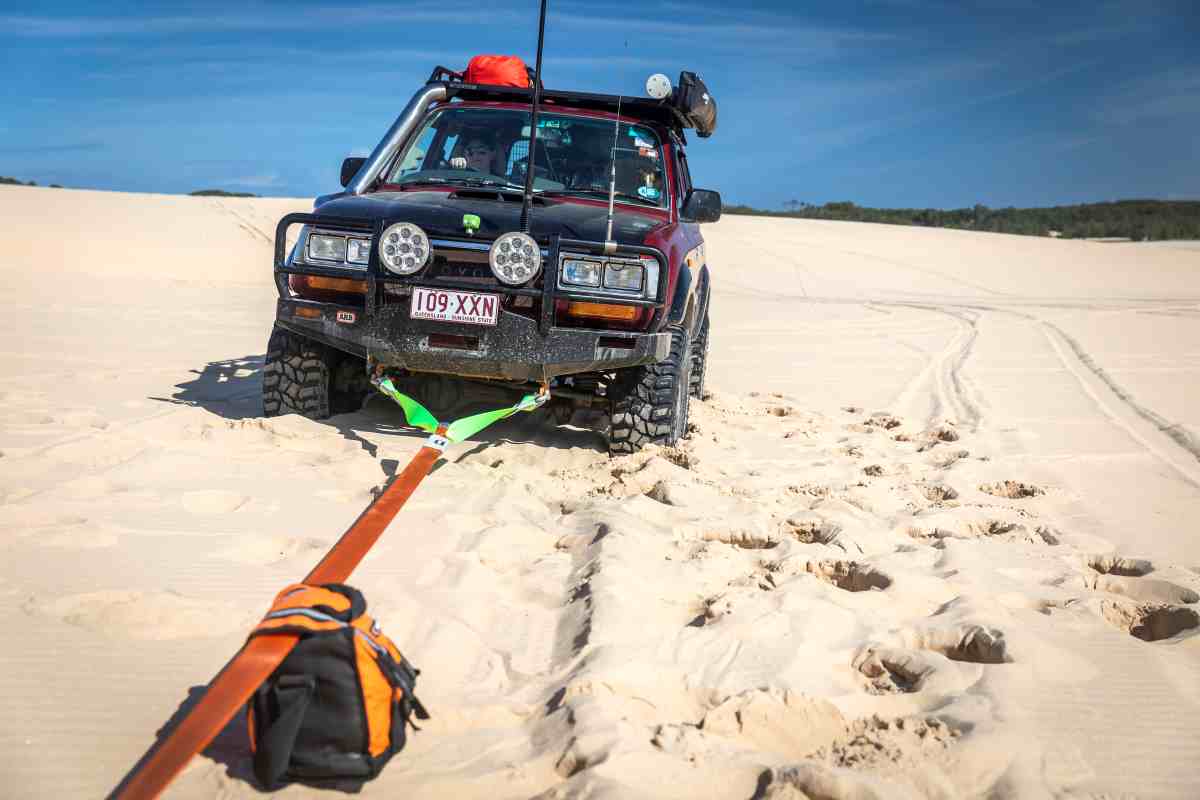
Equalising straps look an awful lot like tree trunk protectors but are often made and rated differently. They’re a touch more abrasion-proof than tree trunk protectors and are often rated lower than their counterparts.
When utilising your recovery points, you’ll want to put the strap between the two points and attach your snatch strap or winch rope to the middle. This allows the weight of the snatch or winch pull to be distributed across both points, giving two benefits. The first is that you’re only loading half the weight per recovery point – two’s always better than one. The other benefit is that if you’re pulling sideways, or on an angle, you’re not pulling from one side of your four-wheel drive – it’s going to be centred (unless, of course, you need to, if you’re on a sketchy angle).
Whenever possible, always snatch someone forward if you’re the one who’s not bogged. Hook the strap up to your hitch receiver in your tow bar and then to their recovery points at the front of their vehicle, and drive forward to snatch them. The reason for this may just save your diff. See, diff gears are cut, and mesh in a way that when you’re powering forward, you’ve got the greatest contact of teeth on teeth – for obvious reasons (we’re usually applying the most amount of torque when driving forward). The shock loading into your driveline from snatching is rather aggressive, so you’ll want that taken across the greatest mesh area in your diff – broken teeth are never, ever a good thing.
I know everyone already knows this, but sometimes it needs to be said – always use a bloody winch dampener/blanket when you’re recovering someone. Hell, use your recovery gear bag, something, anything. It may sound obvious, but they’ve saved more lives than not, and only take an extra 30 seconds to throw on the strap or winch line. Anything we can attach to the winch rope, or straps we’re using, to slow down a steel projectile is a positive, right?
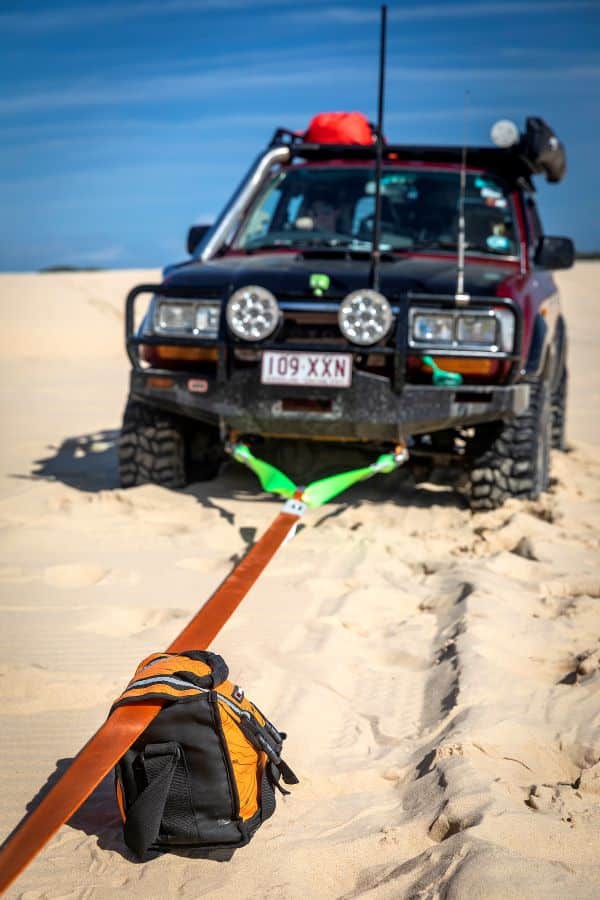
And finally, take your time. Stop, have a think, look at what’s going to happen when you recover someone. Too many accidents and mistakes happen when you’re rushing things. An extra 30 seconds usually won’t make a huge difference in the scheme of a recovery, yet it may save someone’s life. Be safe out there!
Words by Wes Whitworth. Images by Mary-Anne Whitworth.